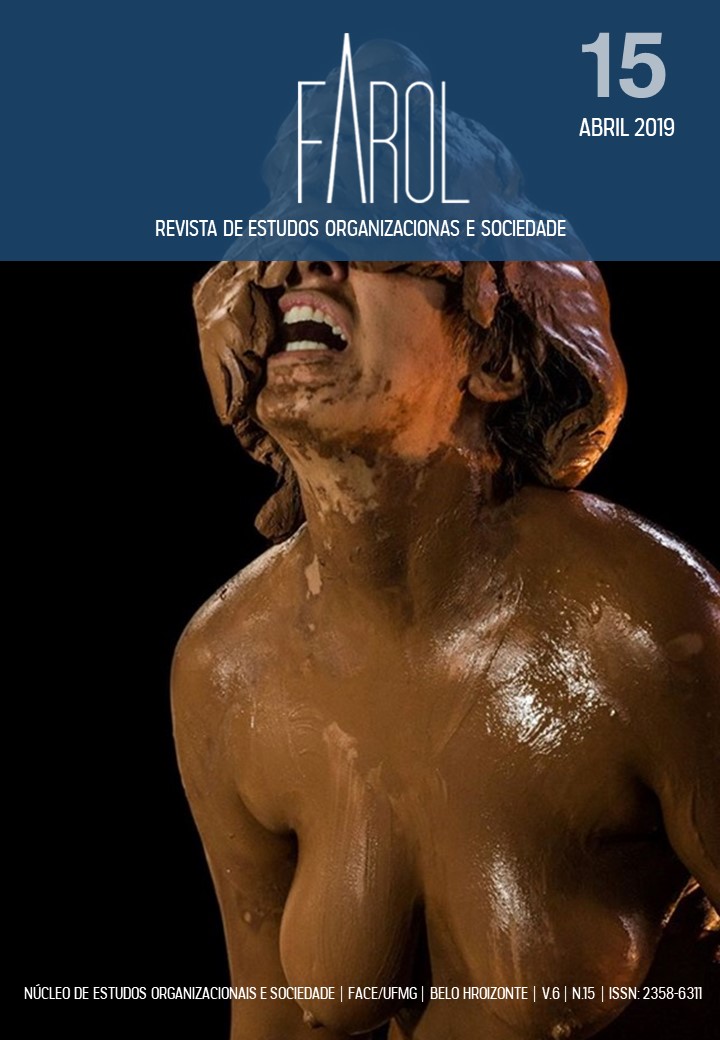HOW MUCH?
DOI:
https://doi.org/10.25113/farol.v6i15.5518Keywords:
Environmental crimes, Capital acummulation, SocietyAbstract
The levees broke. Panic, despair, and indignation settled. The alarms did not ring, and suddenly the sea of mud came. Sea of tailings, of impurities, the rest of the production of which we were not asked if we wanted. We were shoved down the river.
We saw pain and suffering. Bodies (dis) found and everything solidified. Uninhabitable. From Bento Rodrigues to Brumadinho, the rivers died and became bitter: indigenous orphans, workers without compasses, fishermen without sustenance, farmers without production and surfers on a back side in the sand.
In three years, two months and 20 days, everything was repeated. Water blurred in hard stone, both beats until ...? That nothing happens! Monkeys Upstream. Ouro Preto ... How many more? There are hundreds of dams in Brazil. How to sleep?
Environmental crimes are not a concern for the next generations. They are for yesterday, for our generation! How much are you worth? How much is nature and the ecosystem worth? How much is the water worth? How much is the work worth? How much is the profit?
This mire also covers us, blinds us. We need to keep reflecting on the predatory role of organizations and the accumulation of capital. We need to discuss social, environmental, political interests and the commitment of organizations.
No, it was not an accident! Let's not forget Mariana and Brumadinho!
If this is the dark side, let the light reach the banks, and in this case, in the darkness that covers the banks of the Minas Gerais rivers.
References
Downloads
Published
Issue
Section
License
Assume-se que em qualquer das modalidades de contribuições aceitas pela Farol – Revista de Estudos Organizacionais e Sociedade, ao submeter um trabalho, o(s) autor(es) se reconhece(m) como detentor(es) do direito autoral sobre ele e autoriza(m) seu livre uso pelos leitores, podendo ser, além de lido, baixado, copiado, distribuído, adaptado e impresso, desde que seja atribuído o devido crédito pela criação original. Em caso de aprovação do trabalho para publicação, os direitos autorais (inclusive os direitos de tradução) são exclusivamente do(s) autor(es).
Os autores devem concordar com os seguintes termos relativos aos Direitos Autorais:
a. Autores mantém os direitos autorais e concedem à revista o direito de primeira publicação, com o trabalho simultaneamente licenciado sob a Licença Creative Commons Attribution que permite o compartilhamento do trabalho com reconhecimento da autoria e publicação inicial nesta revista.
b. Autores têm autorização para assumir contratos adicionais separadamente, para distribuição não-exclusiva da versão do trabalho publicada nesta revista (ex.: publicar em repositório institucional ou como capítulo de livro), com reconhecimento de autoria e publicação inicial nesta revista.
c. Autores têm permissão e são estimulados a publicar e distribuir seu trabalho online (ex.: em repositórios institucionais ou na sua página pessoal) a qualquer ponto antes ou durante o processo editorial, já que isso pode gerar alterações produtivas, bem como aumentar o impacto e a citação do trabalho publicado (Veja O Efeito do Acesso Livre).

